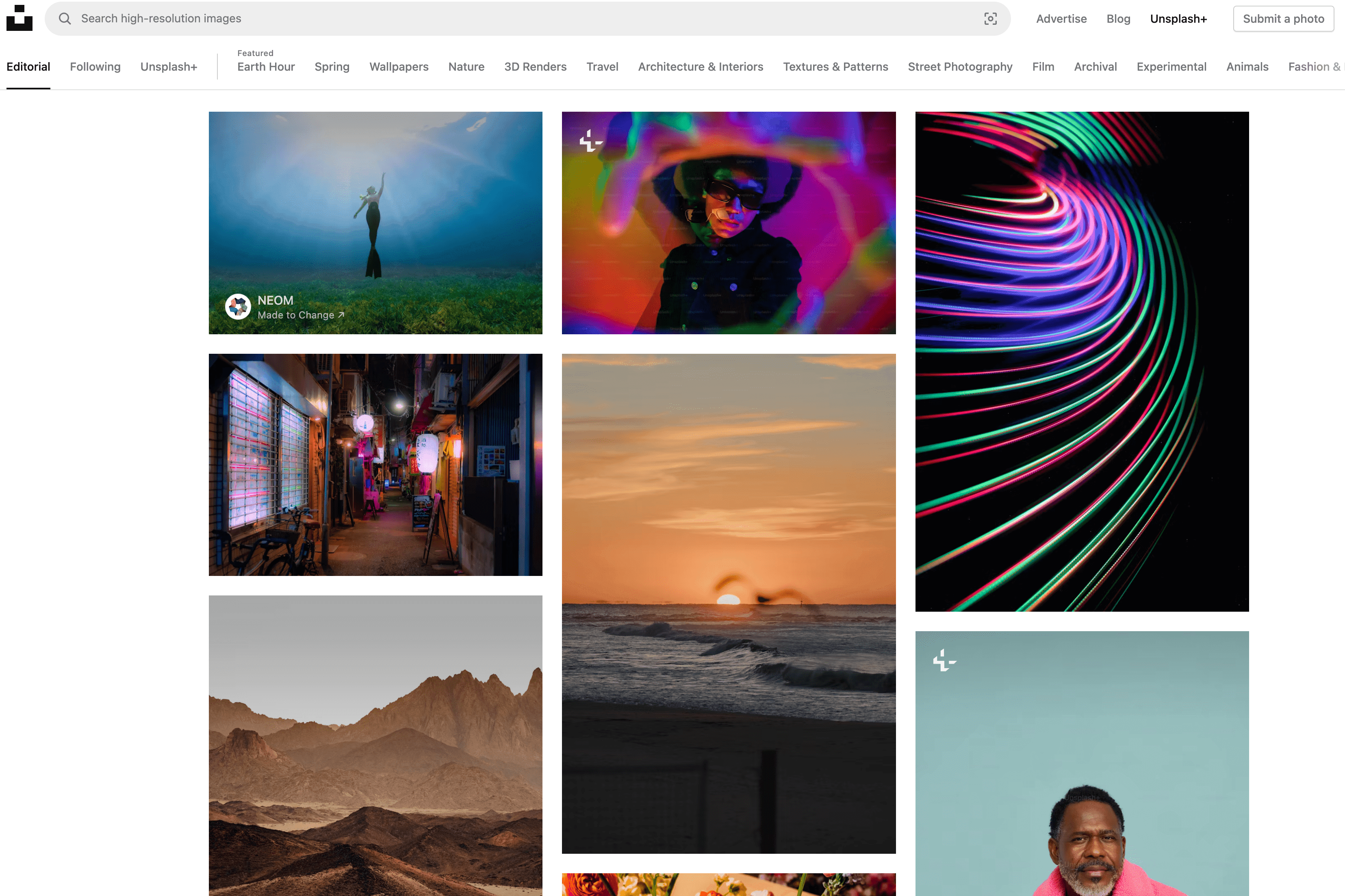How to name images for maximum SEO benefits? Practical Tips & Guide.
How to name images for maximum SEO benefits? Practical Tips & Guide.
By Team Remagine AI, March 26, 2024

Table of Contents
Introduction
Understanding the basics of image naming for SEO
Choosing the right keywords for image names
Formatting image names for SEO
Incorporating target keywords in image names
Optimizing image names for user experience
Utilizing image alt text for SEO benefits
Naming images for different types of content
Tools and Resources for Optimizing Image Names
Monitoring and evaluating the impact of image names on SEO
FAQ
Introduction
When it comes to optimizing your website for search engines, every little detail counts. One often overlooked aspect of SEO is the naming of images on your website. By giving your images descriptive and keyword-rich names, you can improve your chances of ranking higher in search engine results.
Having a strategic approach to naming your images can make a big difference in how your website performs in search engines. By following some practical tips and guidelines, you can ensure that your images are working for you in terms of SEO benefits.
In this blog post, we will discuss the importance of naming images for SEO, as well as provide you with some practical tips on how to choose the best names for your images.
By the end of this guide, you will have a better understanding of how to maximize the SEO benefits of naming your images effectively.
Understanding the basics of image naming for SEO
When it comes to optimizing your website for search engines, image naming is often overlooked. However, naming your images properly can have a significant impact on your SEO efforts. By following some simple guidelines, you can ensure that your images are helping, rather than hindering, your search engine rankings.

One of the most important things to keep in mind when naming your images for SEO is to use descriptive and relevant filenames. Instead of using generic names like IMG_1234.jpg, be sure to use keywords that accurately describe the content of the image.
For example, if you have a picture of a red apple, a filename like red-apple.jpg would be much more beneficial for SEO.
Another important aspect of image naming for SEO is to use hyphens to separate words in your filenames. Search engines like Google use hyphens to distinguish between words in a filename, so using them can help improve the readability of your image names.
For example, instead of using underscores or spaces, use hyphens like red-apple.jpg to make your filenames more SEO-friendly.
Including your target keywords in your image filenames can improve your chances of ranking higher in image searches.
In addition to using descriptive filenames and hyphens, it's also a good idea to include alt text for your images. Alt text is a brief description of an image that is displayed if the image fails to load or for visually impaired users.
By including relevant keywords in your alt text, you can further optimize your images for search engines.
By following these simple tips and guidelines, you can ensure that your images are named in a way that maximizes their SEO benefits.
Remember to use descriptive filenames, include hyphens, and add alt text to improve the visibility of your images in search engine results. With a little effort, you can make sure that your images are working for you, not against you, in your SEO strategy.
Choosing the right keywords for image names
When it comes to naming your images for maximum SEO benefits, selecting the right keywords is crucial. By incorporating relevant keywords into your image names, you can improve your chances of ranking higher in search engine results and driving more organic traffic to your website.
Did you know that images with descriptive file names are more likely to be indexed by search engines?
Tips for choosing the right keywords:
- Be descriptive: When naming your images, be as descriptive as possible. Use keywords that accurately describe the content of the image. For example, instead of naming an image IMG_001.jpg, opt for a name like sunset-over-ocean.jpg.
- Use relevant keywords: Make sure to use keywords that are relevant to the content of the image and your website. Think about what users would search for when looking for similar images online.
- Consider long-tail keywords: Long-tail keywords are more specific and can help you target a niche audience. For example, instead of using a generic keyword like sunset, consider using a long-tail keyword like purple-sunset-over-ocean.
- Optimize for local SEO: If your images are related to a specific location, consider including location-based keywords in the image names. This can help improve your local SEO and attract users searching for content in that area.
- Avoid keyword stuffing: While it's important to include keywords in your image names, avoid overloading them with too many keywords. This can come across as spammy and may harm your SEO efforts.
By following these tips and choosing the right keywords for your image names, you can enhance your website's SEO and increase your visibility in search engine results.
Remember to keep your image names concise, descriptive, and relevant to the content of the image to maximize their SEO benefits.
Formatting image names for SEO
When it comes to optimizing your images for search engines, one crucial aspect to consider is the naming of your image files. By using descriptive and keyword-rich names for your images, you can improve their visibility in search engine results and drive more traffic to your website.

Did you know that images with relevant file names can rank higher in image search results?
Here are some practical tips for formatting image names for maximum SEO benefits:
- Use descriptive keywords: Instead of using generic file names like IMG_1234.jpg, opt for descriptive names that include relevant keywords related to the image content. For example, instead of sunset.jpg, a better file name would be vibrant-sunset-over-ocean.jpg.
- Separate words with hyphens: When naming your image files, it's important to separate words with hyphens (-) rather than underscores (_) or spaces. Search engines like Google prefer hyphens as word separators, making it easier for them to understand the content of your images.
- Include relevant alt text: In addition to naming your image files appropriately, don't forget to include relevant alt text for each image on your website. Alt text not only improves accessibility for visually impaired users but also provides search engines with more context about your images.
- Avoid keyword stuffing: While it's important to include relevant keywords in your image names, avoid keyword stuffing at all costs. Focus on using natural and descriptive names that accurately reflect the content of the image.
By following these practical tips for formatting image names for SEO, you can enhance the visibility of your images in search engine results and attract more organic traffic to your website.
Remember, every little detail counts when it comes to optimizing your website for search engines, so make sure to pay attention to even the smallest elements like image names.
Incorporating target keywords in image names
When it comes to optimizing images for SEO, one important factor to consider is incorporating target keywords in the image names.
By including relevant keywords in the names of your images, you can improve the chances of your images showing up in search engine results when users are looking for content related to those keywords.
Including target keywords in image names can help improve the visibility of your images in search engine results.
Here are some practical tips for incorporating target keywords in image names for maximum SEO benefits:
- Be descriptive: When naming your images, make sure to use descriptive keywords that accurately reflect the content of the image. For example, instead of naming an image IMG_1234.jpg, consider naming it sunset-over-ocean.jpg to provide more context for search engines.
- Use hyphens: When separating words in image names, it is recommended to use hyphens (-) instead of underscores (_) or spaces. Search engines like Google prefer hyphens as word separators, making it easier for them to understand the content of the image.
- Optimize for long-tail keywords: In addition to using primary target keywords, consider incorporating long-tail keywords in image names to capture more specific search queries. For example, instead of naming an image spaghetti.jpg, consider naming it spaghetti-carbonara-recipe.jpg to target users looking for a specific type of spaghetti dish.
- Avoid keyword stuffing: While it is important to include target keywords in image names, avoid keyword stuffing by using too many keywords in a single image name. Keep the image name concise and relevant to the content of the image to maintain a good user experience.
By following these practical tips for incorporating target keywords in image names, you can improve the SEO performance of your images and increase their visibility in search engine results. Remember to prioritize descriptive and relevant keywords to help users find your images easily.
Optimizing image names for user experience
When it comes to optimizing image names for user experience, it's important to consider how the image will be perceived by your audience. A well-named image can enhance the overall user experience on your website and make it more engaging for visitors.

Here are some practical tips to help you name your images for maximum SEO benefits.
- Use descriptive and relevant keywords: When naming your images, be sure to use descriptive and relevant keywords that accurately reflect the content of the image. This will not only help improve your SEO but also make it easier for users to understand what the image is about.
- Avoid generic file names: Instead of using generic file names like image001.jpg or IMG_1234.png, try to be more specific and descriptive. For example, if you have an image of a beach sunset, a good file name could be beach-sunset.jpg.
- Include alt text: Alt text is an important element for SEO and accessibility. Make sure to include relevant keywords in the alt text of your images to improve their visibility in search engines.
- Consider the context: Think about where the image will be placed on your website and how it relates to the surrounding content. The image name should complement the text and provide additional context for the reader.
- Keep it concise: While it's important to be descriptive, it's also important to keep your image names concise. Long file names can be cumbersome and difficult to read, so aim for a balance between descriptive and succinct.
- Optimize for mobile: With the rise of mobile usage, it's essential to optimize your images for mobile devices. Make sure your image names are mobile-friendly and don't contain any special characters or symbols that may cause issues on smaller screens.
In conclusion, optimizing image names for user experience is a crucial aspect of SEO that can greatly impact the overall performance of your website.
By following these practical tips and guidelines, you can ensure that your images are not only optimized for search engines but also provide a positive user experience for your visitors.
Utilizing image alt text for SEO benefits
The alt text of an image is a crucial element for SEO as it provides search engines with information about the content of the image. By optimizing your image alt text, you can improve your website's visibility and rankings on search engine results pages. Here are some practical tips on how to name images for maximum SEO benefits:
Tip: Make sure to use descriptive keywords in your alt text that accurately describe the image.
Fact: According to a study by Moz, images with optimized alt text are more likely to appear in image searches.
When naming images for SEO, it's important to keep in mind the relevance of the alt text to the content of the page.
Avoid using generic terms or keyword stuffing, as this can negatively impact your SEO efforts. Instead, focus on providing accurate and descriptive alt text that enhances the user experience.
Include relevant keywords in your alt text to improve your image's visibility in search results.
In addition to optimizing your alt text, it's also important to pay attention to the file name of your images. Use descriptive file names that include relevant keywords to further improve your SEO.
Avoid using generic file names like image123.jpg and instead opt for names that accurately describe the content of the image.
By following these practical tips and guidelines for naming images for maximum SEO benefits, you can enhance your website's visibility and attract more organic traffic.
Remember to prioritize user experience and relevance when optimizing your alt text and file names, as this will ultimately benefit your SEO efforts in the long run.
Naming images for different types of content
When it comes to naming images for different types of content, it's important to consider the context in which the images will be used. Whether you are creating blog posts, product pages, or social media posts, the way you name your images can have a significant impact on your SEO efforts.
Blog Posts
When naming images for blog posts, it's important to choose descriptive and relevant names that reflect the content of the post. This not only helps with SEO, but it also makes it easier for readers to understand what the image is about.
For example, if you have a blog post about 10 Tips for Traveling on a Budget, you could name your image budget-travel-tips.jpg to give readers a clear idea of what the image is about.
Tip: Including keywords in your image names can help improve your search engine rankings.
Product Pages
When naming images for product pages, it's important to include the product name, brand, and any relevant keywords. This helps search engines understand what the image is about and can improve your chances of ranking higher in search results.
For example, if you are selling a red dress from a brand called Fashionista, you could name your image fashionista-red-dress.jpg to optimize for SEO.
Social Media Posts
When naming images for social media posts, it's important to keep in mind the platform you are posting on. Different platforms have different image size requirements and best practices for naming images.

For example, on Instagram, it's recommended to use short and catchy names for images, while on Pinterest, it's important to include keywords in the image name to improve searchability.
Posts with images receive 650% higher engagement than text-only posts on social media.
Naming images for different types of content is an important aspect of SEO that should not be overlooked. By choosing descriptive and relevant names that include keywords, you can improve your chances of ranking higher in search results and attracting more visitors to your website or blog.
Tools and Resources for Optimizing Image Names
When it comes to optimizing image names for SEO benefits, there are a variety of tools and resources available to help you achieve the best results.
These tools can make the process easier and more efficient, allowing you to name your images in a way that will improve your search engine rankings and drive more traffic to your website.
One of the most popular tools for optimizing image names is the Yoast SEO plugin for WordPress. This plugin allows you to easily edit the alt text and title of your images, as well as providing suggestions for improving your image names based on SEO best practices. With Yoast SEO, you can ensure that your images are properly optimized for search engines, helping to increase your visibility online.
Did you know that images with descriptive file names are more likely to appear in image search results?
Another useful resource for optimizing image names is the Google Keyword Planner. By using this tool, you can research relevant keywords related to your images and incorporate them into your image names. This can help improve the chances of your images appearing in search results when users are looking for specific content.
In addition to these tools, there are also online resources such as ImageOptim and TinyPNG that can help you optimize your images for faster loading times and better SEO performance. By reducing the file size of your images without sacrificing quality, you can improve your website's overall performance and user experience.
By utilizing these tools and resources for optimizing image names, you can ensure that your images are easily discoverable by search engines and users alike.
Taking the time to name your images thoughtfully and strategically can have a significant impact on your SEO efforts and ultimately drive more traffic to your website.
Monitoring and evaluating the impact of image names on SEO
When it comes to optimizing your website for search engines, naming your images properly can have a significant impact on your SEO efforts. But how do you know if the image names you choose are actually making a difference?
Here are some practical tips and tools to help you monitor and evaluate the impact of your image names on SEO.
Using Google Analytics to track image search traffic
Did you know that images can drive a significant amount of traffic to your website? Make sure to track your image search traffic in Google Analytics to see the impact of your image names on SEO.
One way to monitor the impact of your image names on SEO is to track the traffic coming to your website from image searches. Google Analytics allows you to see the sources of your website traffic, including how many visitors are coming from image searches. By monitoring this data, you can get a better understanding of how your image names are performing in search results.
Conducting A/B tests with different image names
A/B testing is a great way to experiment with different image names and see which ones perform best in terms of SEO.
Another way to evaluate the impact of your image names on SEO is to conduct A/B tests with different image names. Create two versions of the same image with different names, and track their performance in search results over time.
This will help you determine which types of image names are most effective in driving traffic to your website.
Example of a well-optimized image name
For example, let's say you have an image of a beach sunset on your travel website. Instead of naming the image IMG_1234.jpg, a more SEO-friendly name would be beach-sunset-travel-destination.jpg.
This descriptive and keyword-rich image name can help search engines better understand the content of the image and improve its visibility in search results.
Example of a poorly-optimized image name
On the other hand, if you have an image of a beach sunset with the name sunset.jpg, this generic and non-descriptive image name may not help your SEO efforts.
Users searching for beach sunset travel destination are less likely to find this image in search results compared to a more optimized image name.
FAQ
Why is it important to name images for SEO benefits?
Naming images with relevant keywords can improve visibility on search engines and drive more organic traffic to your website.
How should I name my images for maximum SEO benefits?
Use descriptive and keyword-rich file names that accurately reflect the content of the image to improve search engine rankings.
Can I use special characters or symbols in image file names for SEO purposes?
It is recommended to avoid using special characters or symbols in image file names as they can negatively impact SEO and make it harder for search engines to index your images.
Should I include alt text for my images to improve SEO?
Yes, adding descriptive alt text to your images can further enhance SEO by providing search engines with more context about the image content.
Are there any tools or plugins that can help optimize image names for SEO?
Yes, there are various SEO plugins and tools available that can assist in optimizing image names for better search engine visibility, such as Yoast SEO and SEMrush.
Related Blogs